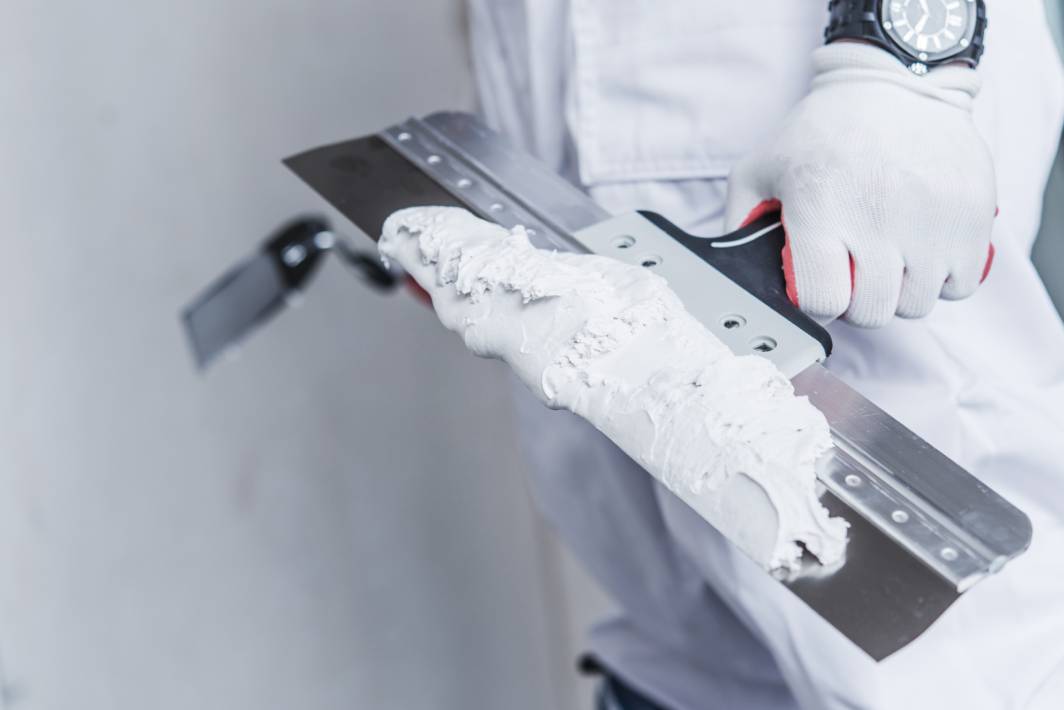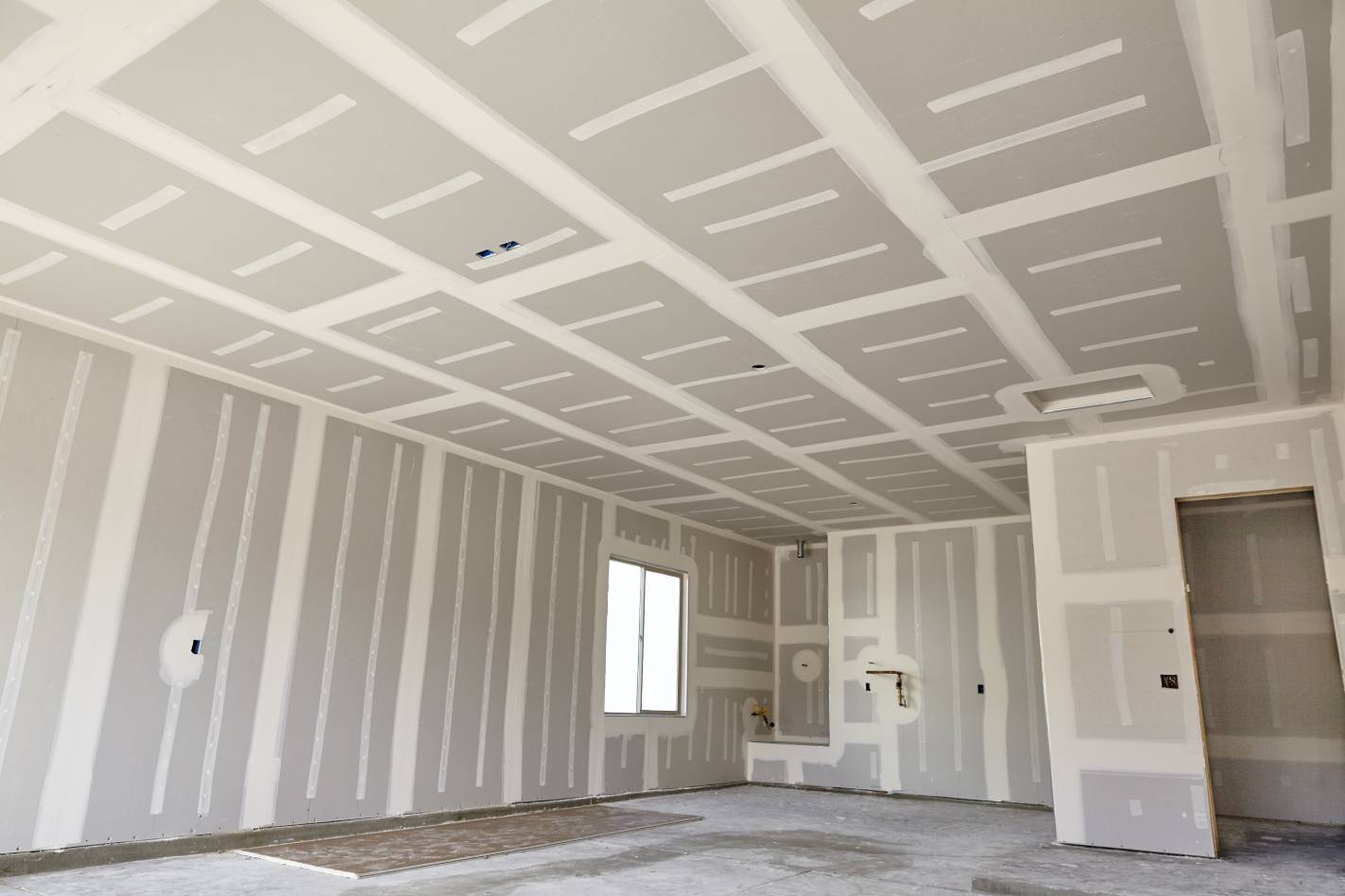How Many Coats of Mud on Drywall? Solved!
-
- Last updated:


Once you’ve hung sheets of drywall and applied tape, the next step is to use a premixed joint compound, or drywall mud, to make an imperceptible transition from one sheet to another. The process takes practice, and it requires the use of the right tools, as well as some tried-and-tested tips and techniques. But once you’ve mastered drywall mud, you can create a finish that is so smooth you won’t know it’s there. Your first few attempts may lead to more mess than finesse—but you will get the hang of it.

So, How Many Coats Should You Expect to Use?
You should expect a minimum of three coats of drywall mud, more likely four, and possibly even five coats. Several things will determine how many coats you need, including:
- Straightness of the walls. Uneven walls can take as many as five coats to achieve a smooth surface.
- The type and quality of mud. Aim for four or five thin layers, because this will minimize the amount of sanding required between layers.
- The type of knife used. Wider knives take more experience and skill, but they provide a flatter and smoother surface so it will usually result in fewer coats of mud.
- Your skills. Experienced finishes are seriously skilled. They can get the job done in three coats with minimal or no sanding after the first two. Inexperienced finishers may need four or even five coats.
What is a Drywall Mud?

Mud is actually a drywall compound. Its primary purpose is to smooth the gaps between sheets of drywall, creating a seamless transition from one section of plaster to the next. It can also be used to create a smooth surface over nail and screw holes and other blemishes. It is a gypsum-based paste that is designed for easy application and that will harden to create a solid surface, as the moisture dissipates.
There are, in fact, several types of drywall compounds:
- All-Purpose Compound – This is the most common type and it can be used for everything from base coats to finishing and taping coats. It is lightweight, dries slowly, and negates the need to buy multiple different compounds. This combination makes it popular with DIYers, but some professionals do not like it for the final layer, preferring a stronger topping compound.
- Topping Compound – Usually available as a powder that needs to be mixed with water, topping compound is easy to work and adheres very strongly to bottom layers of compound. Although it is less convenient than an all-purpose compound, because it needs mixing, this means that you can mix what is required and save any leftover powder for future jobs.
- Taping Compound – More difficult to sand than all-purpose, this type of compound is used to bed tape to the wall during the first coat. It is useful around doors and windows and for drywall panels, but it is more difficult to sand because it dries harder than multi-purpose compound.
- Quick-Setting Compound – Most all-purpose compound requires that it is left overnight or longer before a second coat can be applied. If you need to add two coats in a single day, or time is limited, a quick-setting compound is your best option. However, it does mean that you can only mix and apply a small amount at a time, especially if you choose a five-minute setting compound.
Should I Sand Between Coats of Drywall Mud?
In most cases, you should sand between coats of mud. Check the guidelines for your mud, but you will usually need to leave it at least 24 hours to set. Use joint compound sandpaper. After the first and second coat, just remove any bumps or lumps of mud. You don’t need to get a perfect finish at this point.
Also, many experienced drywallers can apply the mud smoothly enough that it doesn’t need sanding between coats, greatly cutting down the work it takes and the amount of mud that is used for the whole process.
Find a drywall specialist in your area, and get free, no-commitment estimates for your project.Consult a DRYWALL expert

Do You Mud the Entire Drywall?

Not only is it unnecessary to mud an entire wall, but you shouldn’t. Drywall panels have beveled edges. When the panels are fit together, there will be a slight indentation where the drywall pieces fit together. The aim of mudding, beyond filling small holes and other blemishes, is to fill these indented sections to create a perfectly flat and smooth surface. This means that you will mud a few inches from each joint, as well as over tape and holes, but you will not mud the whole panel.
How Long Should You Let Drywall Mud Dry Before Sanding?
Although some brands and types of mud are different, most require that you let the mud dry for 24 hours. Once it has dried, you can sand the mud, if required, and then prime and paint it if it is the last coat. Factors such as temperature and humidity can be used to reduce this time, but unless you’re working to a tight schedule, it is best to leave the mud to dry naturally and at its own pace.
How Smooth Should Drywall Mud Be?
Drywall needs to be very smooth when finished. Any imperfections that you can feel will be magnified once the wall is finished, thanks to the application of light and shadow making every ridge and every bump stand out more prominently.
Although you don’t necessarily need to sand the first two layers of drywall, unless you are experienced at slinging mud so that it is smooth enough, the typical DIYer will likely have to sand even these first layers. Sanding the first layers to ensure that they are smooth as possible will reduce the amount of sanding and scraping you need to do later on in the process.
Can You Only Do 2 Coats of Drywall Mud?
The first layer of mud is used to hold the tape. A second layer can usually be applied straight after this. A topcoat, or third coat, can then be added. Experienced finishers might be able to achieve the flat and finished surface that they require at this stage, but chances are that you will need a fourth coat, using a wider knife. For highly irregular and uneven walls, a fifth coat may even be necessary.

How Many Coats of Mud Are Needed On Drywall Sheets?
The number of coats of mud needed to create a smooth and flat drywall surface depends on several factors, including your experience level, the quality of mud, and the quality and smoothness of the wall itself.
Expect to apply a minimum of three layers, more likely four, and potentially five layers, and be prepared to sand mildly between each application to get the best results. Practice does make perfect, but unless you’re starting work as a mudslinger or finisher, you will likely have forgotten your learned techniques by the next time you undertake this particular DIY job.
See Also:
- Types of Drywall: Applications, Uses, & Tools Needed
- How Much Does It Cost to Fix a Hole in Your Wall? Drywall Repair Costs
Featured Image Credit: Virrage Images, Shutterstock
Contents

